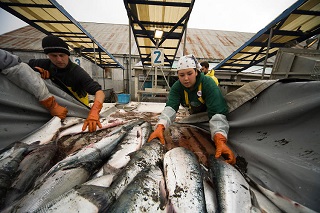For Guest Blogger Marlena Stoddard: Four Unique Uses of Modern Tech That Could Save Our Future

Increasing Food Yields
The use of thermal “infrared” cameras attached to small drones can help farmers increase food yields. Some companies, like Infrared Cameras Inc., sell small cameras that can be attached to drones specifically for this purpose. The use of quantitative radiometric cameras and software will allow farmers to increase their per-acre yield and increase the efficient use of resources simply by identifying specific places in fields that can be improved. They will be able to identify over or under-watered crops, areas in need of fertilizer, bug infestations, and the presence of other pests harmful to crop yields. Instead of adding more water, fertilizer, or pesticide to an entire field, they can pinpoint the areas that need assistance, thus decreasing negative environmental impact.
Make Oil From Waste
Thermo-depolymerization, a process that employs pressure and heat, can convert any carbon-based garbage, from tired tires to turkey guts, into oil. The chemistry is remarkably like the natural processes that produce oil. The technological method, however, works much quicker. Reportedly, a ton of “turkey waste” can produce approximately 600 pounds of petroleum. Though this method can decrease dependence on increasingly difficult to find oil reserves—and cut down on devastating practices like fracking—it should only be considered a stop-gap measure until sustainable sources of energy are made widely available. Burning reclaimed oil still contributes to climate change.
Remove Salt From Ocean Water
Desalination is the process of removing salt and other minerals from ocean water in order to produce potable water. The technology is presently expensive and requires a significant amount of energy. That’s why a group of scientists are working to finalize a process where cheap fuel can be used to both heat and evaporate sea water prior to filtering it through special membranes containing microscopic pores in order to increase efficiency. The potable water can be made available to those currently without easy access to clean drinking water, and the salts and minerals extracted can be used for industrial processes, thus decreasing reliance on the ecologically deplorable practice of strip mining.
Thermal Energy From The Ocean
Earth’s oceans are actually the planet’s largest solar collectors. The U.S. Department of Energy reports that every day the oceans absorb enough heat/energy from the sun to match the thermal energy within 250 billion barrels of oil. The United States alone uses almost 7.5 billion barrels annually.
Ocean thermal energy conversion (OTEC) technologies are currently capable of converting the various oceans’ thermal energy into electricity. The process employs the temperature difference between the surface water’s warmth and the cold of the bottom. The temperature difference is capable of powering turbines that run generators. Scientists, however, have not quite developed the tech to the degree where it can be utilized as a major power-generating mechanism, but the future is promising.
According to the United Nations, the energy needs of the planet will rise about 60 percent by the year 2030. The above four uses of modern technologies may actually aid in sustaining and even improving the future of mankind on its way to a completely sustainable future. One can only hope.

The blurb on “Thermal Energy From The Ocean” is impractical.
Producing power by using differential ocean water temperatures has been considered for almost a century. The problem is that the differential temperatures are too small for a heat engine to operate with sufficient efficiency to do much more than provide power to overcome the parasitic losses. Even a Carnot engine, which is impossible to make, would be insufficiently efficient.
For more information, one can study the following article:
http://hyperphysics.phy-astr.gsu.edu/hbase/thermo/carnot.html
Those who are not physics majors may have to spend considerable time studying it to understand it. However, the information in the article has been known for more than a century.
When trying out the formulae, note that the temperatures have to be degrees absolute, not F or C. In fact, the concept of absolute temperature seems not to be widely understood by the public. Journalists seem to think that a day when the temperature is 80F is twice as hot as a day when the temperature is 40F; that is a clear indication that they do not understand temperature. One wonders what temperature they think would be twice as hot as 0F.
The use of thermal energy from the ocean does not use a heat engine like a Carnot but uses a convective loop. Hot water rises, cold water sinks, the movement of the water turns a turbine much like in hydroelectric dam. Though it has been theorized and I believe tested on a small scale, it has never been proven in a full scale demonstration.